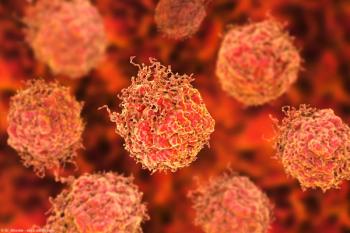
Thermal ablation common for small renal masses
Findings from a recent survey cement the idea that urology departments at academic centers have adopted thermal ablation as an alternative for management of patients with small renal masses, say researchers from the University of Wisconsin, Madison.
Chicago-Findings from a recent survey cement the idea that urology departments at academic centers have adopted thermal ablation as an alternative for management of patients with small renal masses, say researchers from the University of Wisconsin, Madison.
The data from the project, which was a follow-up to an earlier survey performed in 2006, were presented at the 2012 American College of Surgeons Clinical Congress in Chicago.
In order to characterize current practice patterns in the use of ablative technologies, a 12-item survey was mailed to urology departments at 124 academic centers in the United States. Just over half of the questionnaires were returned (52%), and the responses indicated that all of the institutions were performing thermal ablation for small renal masses.
Laparoscopic cryoablation was offered most widely (83%) followed by percutaneous cryoablation (73%), percutaneous radiofrequency ablation (52%), and laparoscopic radiofrequency ablation (20%). The vast majority of institutions (almost 90%) averaged one to five ablation procedures per month while the rest were performing six to 10.
“Thermal ablation has emerged as a viable alternative to surgical excision by partial nephrectomy for the treatment of small renal masses and is included as an option in the latest AUA Guideline for Management of the Clinical T1 Renal Mass issued in 2009,” said senior author Stephen Y. Nakada, MD, the Uehling Professor of Urology and chair of urology at the University of Wisconsin School of Medicine and Public Health, Madison.
“Our survey indicates a trend for increased use of ablation and shows that urologists are accepting this less invasive approach and are using it.”
Urologists’ role in procedure varies
The survey also included questions designed to identify the role of the urologist in ablation. The responses showed urologists alone performed the procedure in 13% of institutions, while the rest of the centers were fairly evenly divided as to whether the procedure was done by the radiologist alone or with both specialists involved. However, the urologist was present at the time of ablation in 59% of the institutions and placed the ablation needles in 32% of the centers. With few exceptions (2%), urologists were responsible for postoperative patient care.
“Urologists need to continue to be the physicians caring for patients with renal cancer, and they need to maintain a key role in these cases managed by ablation and be part of the decision making,” said Dr. Nakada.
Another group of questions explored biopsy practices. The results showed that a biopsy was obtained at almost 90% of institutions, but that the biopsy procedure was done prior to the day of ablation in only 19% of institutions. Commenting on these data, Dr. Nakada told Urology Times that he believes a pretreatment biopsy should be done more often than the survey reveals. The AUA Guideline for Management of the Clinical T1 Renal Mass also recommends always performing tumor biopsy prior to thermal ablation.
“I think every patient should be biopsied before the ablative procedure so that we know what we are treating and because the histologic information enables a good follow-up strategy,” Dr. Nakada explained.
Dr. Nakada acknowledged that the study has several limitations. As a survey with a 52% response rate, the findings probably do not provide a totally accurate picture of clinical care and probably overstate utilization of ablation in academic urology programs. On the other hand, because the surveys were sent only to urology departments, they may not have captured programs where thermal ablation is performed only by interventional radiologists. In addition, the study does not provide insight on use of thermal ablation by private practice urologists in the community.
Newsletter
Stay current with the latest urology news and practice-changing insights — sign up now for the essential updates every urologist needs.


















